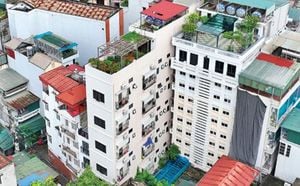The South Australian government took decisive action to protect the future of steelmaking by placing the Whyalla Steelworks under administration, driven by the severe financial distress of its operator, GFG Alliance.
Legislation was quickly pushed through the state parliament on Wednesday, granting the government the authority to intervene decisively. This move is about more than just managing debts; it’s termed by South Australian Premier Peter Malinauskas as securing the very fabric of steel production, which is considered a cornerstone of Australian manufacturing.
GFG Alliance, headed by British billionaire Sanjeev Gupta, is said to owe tens of millions of dollars to both the South Australian government and local utilities, particularly SA Water, which is also owed around $15 million. Malinauskas expressed the gravity of the situation, indicating the risk of the mill becoming ‘irredeemable’ if no intervention occurred.
“We take this action very conscious of its significance... we do so with absolute confidence and clarity,” Malinauskas asserted during a press briefing. He explained the desperation behind the move, noting the steelworks had been under intense financial strain for some time.
GFG’s financial challenges have been exacerbated recently, leading Gupta to announce plans to sell off his Tahmoor Coking Coal Mine as part of efforts to pay debts linked to the Whyalla facility. This prompted the Premier’s comments about the deteriorated financial state: “It was approaching a point where it would be irredeemable...,” he reiterated, emphasizing the risk involved if the government had not acted.
The newly passed legislation not only enables government access to the steelworks’ financial accounts but also places the government’s interests first over any debts owed. This is aimed at ensuring the continuity of operations at the steelworks, which produces 75 percent of the country’s structural steel and is the only domestic producer of steel long products.
KordaMentha, the Asia-Pacific advisory firm, has been appointed as the administrator, with Malinauskas making sure they are fully financed to preserve worker wages and settle creditor claims hindered by the operator’s mounting debts. “Now they can go to work tomorrow knowing if they do the work they will get paid for it,” he said, emphasizing the urgent need to stabilize the operation.
More poignantly, Malinauskas clarified the administration was not about rescuing Gupta or GFG but about securing “critical economic infrastructure” for the nation. He drew attention to GFG's debt crisis and the pressing need to find new ownership to prevent any future lapses.
Industry Minister Ed Husic’s spokesperson reflected on the necessity to halt the disarray surrounding the steel mill, remarking, “what's going on cannot continue...” This resonates deeply as the community linked to the Whyalla Steelworks has been clouded with uncertainty, particularly workers who have faced repeated layoffs and the threat of redundancy amid prolonged ambiguities about the future of their jobs.
The urgency for the steelworks was underscored by the state’s continual surveillance of GFG and its management decisions. Premier Malinauskas harshly warned GFG’s directors, highlighting their responsibilities under corporate law and the imperative of keeping the company solvent amid rising debts.
Going forward, the government's attention turns toward finding new buyers who can revitalize the steelworks. Historically, Gupta purchased the steelworks for $700 million back in 2017, with ambitions to transition to sustainable practices, including integrating hydrogen usage for greener steel production. Malinauskas has indicated there are still discussions on incorporating hydrogen technologies within the decarbonization efforts for the steel industry.
This saga continues to evolve, but the Australian government is clear: it believes it is taking the correct course of action to protect not only the economy of Whyalla but also the overarching health of the national steel industry.
With the steelworks now under administration, stakeholders are hopeful for renewed stability and potential pathways to future investment and innovation, marking this as possibly one of the most significant industrial interventions seen in Australia’s recent history.



